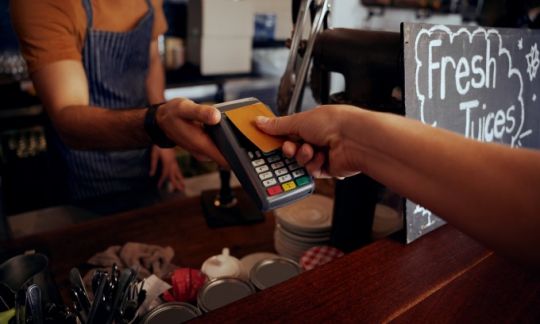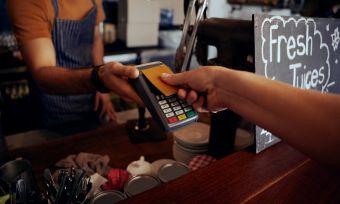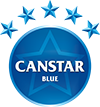What are credit and debit card surcharges?
Credit card surcharges are fees charged by businesses to customers who pay by credit card. So how exactly do they work, and could they soon be banned?

Credit card surcharges are fees charged by businesses to customers who pay by credit card. So how exactly do they work, and could they soon be banned?
Key points:
- A surcharge is a fee that businesses can charge to customers who pay by card
- If a business applies a surcharge, it must not be more than the cost to the business of using that payment type
- If there is no way for a customer to pay for an item without a surcharge, the business must include the surcharge in the displayed price
What is a credit card surcharge?
A credit card surcharge is an extra fee that businesses can charge customers if they pay for goods or services using a card. These fees are not just for credit cards – businesses may charge payment surcharges on transactions made using credit cards, debit cards and prepaid cards, or any digital payment methods that are attached to cards, such as Apple Pay. If you are not sure whether a surcharge applies to a transaction, ask the retailer before paying.
Why are businesses allowed to apply surcharges?
When you use your card to pay for goods and services, the payment network provider charges the business an interchange fee to process the payment. To cover this cost, the business may decide to apply a payment surcharge. Credit card surcharges are usually charged as a percentage of the transaction.
According to the Reserve Bank of Australia, different payment methods can have different costs. For example, some ‘rewards cards’, the kind that provide rewards to consumers in exchange for spending, can be more expensive for merchants to process than other kinds of cards.
The RBA says that merchants have the right to apply surcharges in order to pass the cost of more expensive payment methods back to customers who use them. Applying surcharges to cover merchants’ costs can, in theory, help lower the cost of goods and services for consumers.
Some businesses may decide not to charge payment surcharges. Instead, they may factor the cost into the price of their goods and services and this will apply to all customers.
However, there are rules around the types of charges that businesses are allowed to pass on, and how they advertise their prices when they do.
How much is a credit card surcharge?
According to the RBA, surcharges for credit cards can range from 1% to 1.5% and above, although the exact surcharge amount will depend on the merchant and the type of card. Businesses can set their own surcharges, but they must be based on the cost of accepting a particular payment type, and they cannot be more than the cost.
The RBA states that the average cost of different card payment types, including credit, debit and Eftpos, is as follows:
- Eftpos: less than 0.5%
- Visa and Mastercard debit: between 0.5% and 1%
- Visa and Mastercard credit: between 1% and 1.5%
Is it legal to charge a surcharge on Eftpos in Australia?
Yes, it is legal to charge a surcharge on Eftpos in Australia, and while businesses can set the cost of a surcharge, they must be able to prove the costs that they use to calculate it. The ACCC notes that the amount it costs a business to process a payment will depend on factors such as the size of the business, the technology used to process payments, and the payment method. Small businesses may have higher processing costs than larger ones, and the cost to smaller businesses may therefore be higher than the indicative figures.
What is a reasonable credit card surcharge?
Australian businesses are allowed to charge payment surcharges, but they are banned from charging excessive surcharges (although there are exceptions to the rule). In these cases it means businesses can only charge what it actually costs them to process the payment. This requirement applies to all businesses, regardless of their size.
The ban covers:
- Mastercard and Visa credit, debit and prepaid cards;
- eftpos debit and prepaid cards, and;
- American Express companion cards.
The ban does not apply to:
- American Express cards issued directly by American Express
- BPAY
- PayPal
- Diners Club cards
- cash
- cheques
- payments made for taxi services, which are instead regulated by state and territory regulators
Businesses can charge a flat surcharge across all payment types. For instance, a surcharge across all credit cards (including Visa, Mastercard and American Express). But the ACCC says they are only allowed to charge the cost of the lowest payment system. In this example, the cost of processing Visa and Mastercard payments may be cheaper than American Express so they can only charge the lower cost.
What is the maximum credit card surcharge in Australia?
The ACCC does not stipulate a maximum credit card surcharge in Australia, however, there are laws in place banning ‘excessive’ credit card surcharges. The purpose of this ban is to stop businesses from applying surcharges that are greater than the cost of accepting a payment, and a surcharge is considered excessive if it goes above the so-called ‘cost of acceptance’, which is the cost to the business for accepting that payment method. For example, if it costs a business 1% to accept a Visa credit payment, then the surcharge for this cannot exceed 1%.
When will debit and credit card surcharges be banned?
In October of 2024, Treasurer Jim Chalmers announced that a ban on debit card surcharges is likely to be implemented from January 2026, pending a final review of the plan from the Reserve Bank of Australia (RBA).
“Consumers shouldn’t be punished for using cards or digital payments, and at the same time, small businesses shouldn’t have to pay hefty fees just to get paid themselves,” said Chalmers.
Additionally, in mid-July 2025, the RBA released a Consultation Paper reviewing merchant card payments and surcharging. In it, the central bank proposed implementing a ban on Eftpos, Mastercard and Visa card surcharges from July 2026, as well as reducing interchange fees to merchants. It is estimated that this change could save Australians around $1.2 billion per year in surcharges.
According to the Australian Financial Review, the Treasury is also contemplating other reforms, including whether it should be mandatory for certain essential businesses like supermarkets and petrol stations to accept cash.
Are surcharges getting more common in Australia?
As cash becomes less common in Australia and more of us pay with a card, more of us are likely to be encountering surcharges. Additionally, cost of living pressures may have made them more common in recent years. Speaking with the Sydney Morning Herald, Australian Retailers Association CTO Paul Zahra said that surcharges have become a necessity for some small businesses to remain viable.
“Many retailers who were previously comfortably able to absorb these transaction costs are now not able to do so due to rapidly rising costs across the board, from rising rents, labour, utilities, insurances, and materials,” adding that while individual transaction costs may be small, they can add up for businesses that process a high number of transactions every day.
Between covering the costs of staffing, utility bills and card processing fees, increasing numbers of small and medium-sized businesses in Australia may have decided to pass surcharges to customers as a means of staying afloat. This may not be the case for larger businesses, who may be in a better position to negotiate payment processing rates and fees with banks, and may therefore not feel the necessity to pass on surcharges.
Compare Low Rate Credit Cards with Canstar
The table below displays some of our referral partners’ low rate credit cards for Australians spending around $2000 per month. The results shown are sorted by highest Star Rating, then lowest purchase rate, then alphabetically by provider name. Consider the Target Market Determination (TMD) before making a purchase decision. Contact the product issuer directly for a copy of the TMD. Use Canstar’s credit cards comparison selector to view a wider range of credit cards. Canstar may earn a fee for referrals.

0.00% p.a. interest rate on balance transfers for 24 mths. Rate reverts to 12.99% p.a. Balance transfer fee of 3% applies. Offer available until further notice. See provider website for full details. Terms and conditions apply.
 Apply in full online
Apply in full online
 Fraud protection
Fraud protection

0.00% p.a. interest rate on balance transfers for 24 mths. Rate reverts to 12.99% p.a. Balance transfer fee of 3% applies. Offer available until further notice. See provider website for full details. Terms and conditions apply.
 Apply in full online
Apply in full online
 Fraud protection
Fraud protection

0.00% p.a. interest rate on balance transfers for 24 mths. Rate reverts to 21.99% p.a. Balance transfer fee of 2% applies. Offer available until further notice. See provider website for full details. Terms and conditions apply.
 24hr approval available
24hr approval available
 Apply in full online
Apply in full online
 Fraud protection
Fraud protection

Get $350 Back once you spend $1,000 or more on eligible purchases you get $50 cashback for each month for 7 consecutive statement periods. Offer available until further notice. See provider website for full details. Terms and conditions apply.
 24hr approval available
24hr approval available
 Apply in full online
Apply in full online
 Fraud protection
Fraud protection

Get 10% Back once you spend at selected supermarket and petrol stations (up to $500 total cashback) . Offer available until further notice. See provider website for full details. Terms and conditions apply.

6.99% p.a. interest rate on balance transfers for 12 mths. Rate reverts to 21.99% p.a. Balance transfer fee of 2% applies. Offer available until further notice. See provider website for full details. Terms and conditions apply.
 24hr approval available
24hr approval available
 Apply in full online
Apply in full online
 Fraud protection
Fraud protection
Canstar is an information provider and in giving you product information Canstar is not making any suggestion or recommendation about a particular credit card product. If you decide to apply for a credit card, you will deal directly with a financial institution, and not with Canstar. Rates and product information should be confirmed with the relevant financial institution. For more information, read Canstar’s Financial Services and Credit Guide (FSCG), detailed disclosure, important notes and liability disclaimer. Products displayed above that are not “Sponsored or Promoted” are sorted as referenced in the introductory text and then alphabetically by company. Canstar may receive a fee for referral of leads from these products. See How We Get Paid for further information.
What are the rules when calculating credit card surcharges?
According to the ACCC, there are a number of ways that businesses can apply surcharges, and rules apply when calculating each. Depending on the type of surcharge a business may choose to apply, the rules are:
The lowest surcharge
If a business wants to set the same surcharge across multiple payment methods, it must not be more than the lowest surcharge they would set for a single payment type. For example, if a business accepts Visa debit at a cost of 1% and Visa credit at a cost of 1.5%, and it wanted to charge the same level of surcharge for each, it would have to choose 1%, as this is the lowest amount.
Flat fee surcharge
If a business chooses to apply a flat fee surcharge rather than a percentage, it would need to make sure that the surcharge is no more than the costs of using that payment type. The ACCC also advises that businesses need to be “careful” when it comes to imposing a flat fee surcharge on relatively small cost items.
Surcharges for payments below a certain amount
Businesses can set a minimum amount for card payments, and apply a surcharge to transactions below a certain amount. A business may, for example, apply a surcharge to card payments under $10, however, if it does so, then the surcharge must comply with the ban on excessive surcharges.
The RBA sets the rules for surcharges in Australia and how they apply.
Is there GST on credit card surcharges in Australia?
Credit card surcharges will attract GST if the underlying goods or services also attract GST, according to the Australian Taxation Office.
How can I avoid paying a credit card surcharge?
You may be able to avoid credit card surcharges by using a different payment method such as cash, though this may not always be possible for every transaction. Businesses will usually offer a non-surcharged payment method. For example, they may have a surcharge on credit cards but not on debit card transactions, as they are generally cheaper to process.
It’s also worth checking if PayPal is accepted and if there is a surcharge applied. If there isn’t, you can link your credit card to your PayPal account and make the payment this way.
What if payment without a surcharge is not an option?
The ACCC notes that if a business has no way to pay without a surcharge, then the business must include the minimum surcharge payable in the displayed price for its products. Businesses in this situation must clearly display the full price of a product inclusive of the lowest possible surcharge, and cannot merely say that a surcharge applies.
For example, say that a cafe charges $5 for a coffee, and only accepts payments by card, all of which have surcharges applied. The ACCC says that, if the lowest possible surcharge to buy this coffee would be a 15 cent debut card surcharge, then the cafe would be required to display a price of $5.15 for that coffee.
What can you do if you think a surcharge is too high?
If you think you’ve been asked to pay an excessive surcharge, you can contact the ACCC. The ACCC can investigate and penalties can apply if the business is found to have breached the law.
The ACCC says that if you have concerns about a surcharge for BPAY, PayPal, Diners Club or American Express, this concern can be reported to the relevant BPAY, PayPal, Diners Club or American Express system.
If you have concerns about a surcharge on a taxi fare, this can be reported to the relevant state or territory taxi industry regulator.
Cover image source: Stratford Productions/Shutterstock.com
This article was reviewed by our Content Editor Alasdair Duncan before it was updated, as part of our fact-checking process.

Mark has been a journalist and writer in the financial space for over ten years, previously researching and writing commercial real estate at CoreLogic. In the years since, Mark has worked for the Winning Group, Expedia, and has seen articles published at Lifehacker and Business Insider.
Mark has also completed RG 146 (Tier 1), making him compliant to provide general advice for general insurance products like car, home, travel and health insurance, as well as giving him knowledge of investment options such as shares, derivatives, futures, managed investments, currencies and commodities. Find Mark on Linkedin.
- What is a credit card surcharge?
- Why are businesses allowed to apply surcharges?
- How much is a credit card surcharge?
- Is it legal to charge a surcharge on Eftpos in Australia?
- What is a reasonable credit card surcharge?
- What is the maximum credit card surcharge in Australia?
- When will debit and credit card surcharges be banned?
- Are surcharges getting more common in Australia?
- What are the rules when calculating credit card surcharges?
- Is there GST on credit card surcharges in Australia?
- How can I avoid paying a credit card surcharge?
- What if payment without a surcharge is not an option?
- What can you do if you think a surcharge is too high?

Get 70000 Qantas Points once you spend $3,000 on eligible purchases on your new Qantas American Express Ultimate Card within the first 3 months. Plus, an additional 20,000 bonus Qantas Points when you spend min $1 on your Card within 90 days of paying your second year annual Card fee. Offer available until 13-JAN-2026. See provider website for full details. Terms and conditions apply.
 Travel insurance
Travel insurance
 Points never expire
Points never expire
 Airline lounge access
Airline lounge access
Try our Credit Cards comparison tool to instantly compare Canstar expert rated options.






